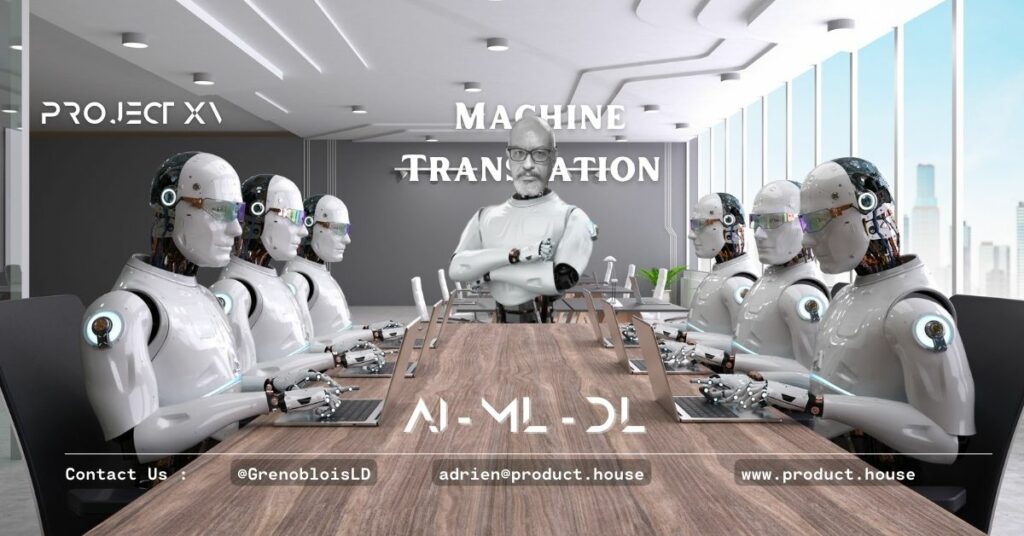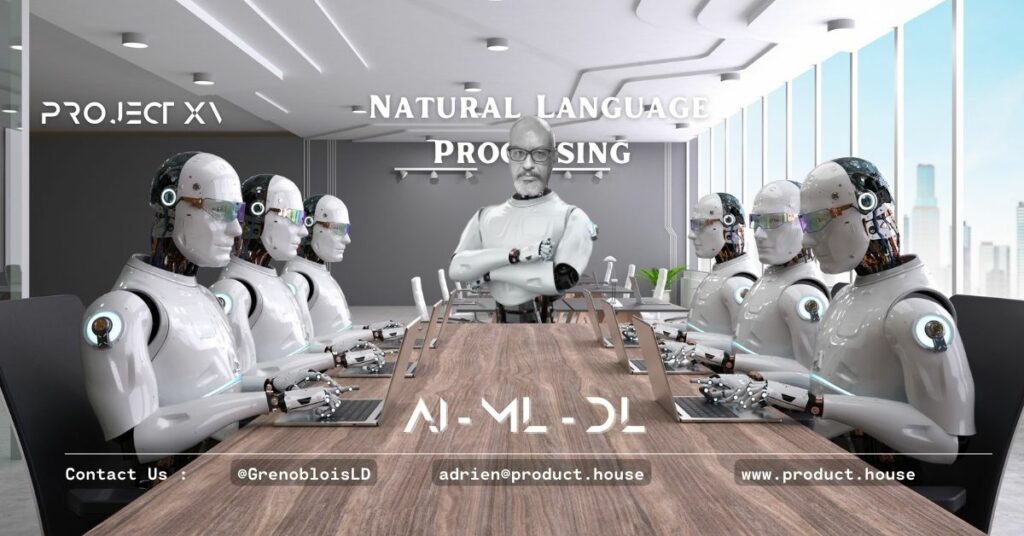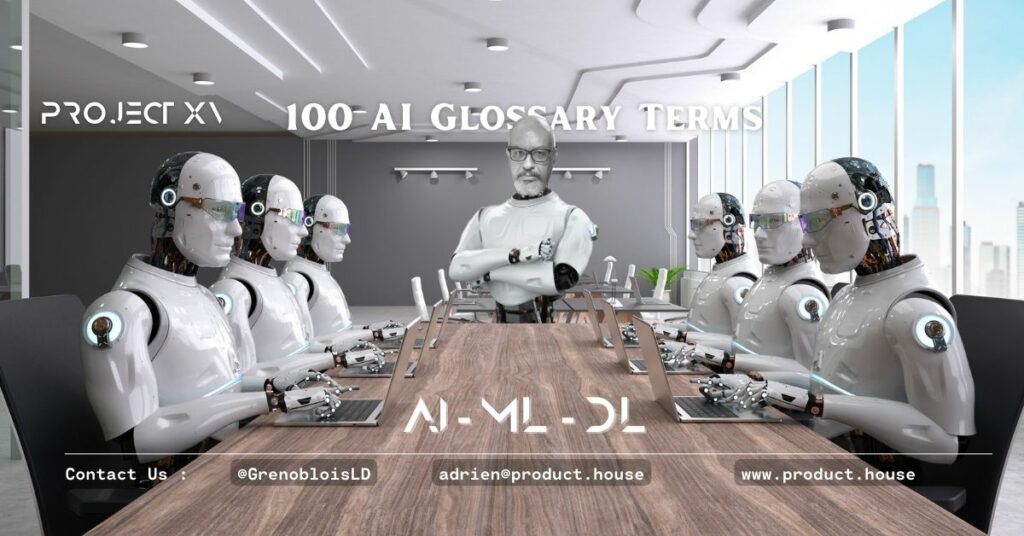Machine Translation: How AI Is Helping to Break Down Language Barriers

Language barriers have always been a challenge in communication. With the advent of globalization, it has become increasingly important to bridge the gap between languages. Machine Translation (MT) is a form of artificial intelligence that is helping to break down language barriers by automatically translating text or speech from one language to another. This article will explore how MT works, its benefits and limitations, and its impact on various industries.
How Machine Translation Works
Machine Translation uses Natural Language Processing (NLP) algorithms to analyze and translate text or speech from one language to another. The process involves three main steps:
- Analysis: The input text is analyzed to identify the grammatical structure and meaning of each word.
- Translation: The analyzed text is translated into the target language using a set of predefined rules, statistical models, or neural network algorithms.
- Generation: The translated text is generated in the target language, taking into account its grammatical rules and cultural context.
Machine Translation can be further divided into two categories: rule-based and statistical.
- Rule-Based Machine Translation (RBMT): RBMT uses a set of predefined rules to translate text. These rules are created by linguists and domain experts who define the syntax and semantics of the source and target languages. While RBMT is accurate for simple sentences, it struggles with complex structures and idiomatic expressions.
- Statistical Machine Translation (SMT): SMT uses statistical models to translate text. These models are trained on large datasets of parallel corpora, i.e., pairs of text in the source and target languages. SMT is more accurate than RBMT for complex sentences and idiomatic expressions but may still struggle with context and cultural nuances.
Recently, Neural Machine Translation (NMT) has emerged as a new paradigm for MT. NMT uses deep learning techniques to learn the relationship between words and their meaning in context. NMT has shown significant improvements in translation quality over RBMT and SMT and is now the dominant approach in MT.
Benefits of Machine Translation
- Multilingual Communication: MT allows people to communicate across language barriers without the need for human translators. This has significant implications for business, diplomacy, and social interactions.
- Cost-Effective: MT is much cheaper than hiring human translators, especially for large volumes of text.
- Speed: MT can translate text almost instantly, which is particularly useful in time-sensitive situations such as news reporting or customer service.
- Consistency: MT provides consistent translations that adhere to predefined rules and quality standards.
- Accessibility: MT can make information accessible to people who do not speak the original language, such as travelers or immigrants.
Limitations of Machine Translation
- Accuracy: MT is still not as accurate as human translation, especially for complex sentences, idiomatic expressions, and cultural nuances.
- Context: MT may struggle to capture the intended meaning of the source text in certain contexts, leading to mistranslations or misinterpretations.
- Confidentiality: MT services may store or process sensitive information, raising concerns about data privacy and security.
- Post-Editing: MT output often requires post-editing by human translators to correct errors and improve fluency, reducing the cost and time savings.
Impact of Machine Translation
- Business: MT has significant implications for businesses operating in global markets, allowing them to reach a wider audience and reduce translation costs. MT can also facilitate cross-border communication and collaboration.
- Government: MT can help governments communicate with foreign populations, reduce language barriers in diplomacy, and enhance national security by monitoring foreign language content.
- Education: MT can make educational content accessible to students who do not speak the original language, providing opportunities for cross-cultural learning.
- Healthcare: MT can improve access to healthcare information for non-native speakers, reducing health disparities.
FAQs
- What is Machine Translation?
Machine Translation (MT) is a form of artificial intelligence that automatically translates text or speech from one language to another. - How does Machine Translation work?
Machine Translation uses Natural Language Processing (NLP) algorithms to analyze and translate text or speech from one language to another. The process involves analysis, translation, and generation steps. - What are the benefits of Machine Translation?
The benefits of Machine Translation include multilingual communication, cost-effectiveness, speed, consistency, and accessibility. - What are the limitations of Machine Translation?
The limitations of Machine Translation include accuracy, context, confidentiality, and the need for post-editing. - What is Neural Machine Translation?
Neural Machine Translation (NMT) is a new paradigm for MT that uses deep learning techniques to learn the relationship between words and their meaning in context. - What industries are impacted by Machine Translation?
Machine Translation has significant implications for business, government, education, and healthcare. - How can Machine Translation help businesses?
Machine Translation can help businesses reach a wider audience, reduce translation costs, and facilitate cross-border communication and collaboration. - Is Machine Translation as accurate as human translation?
Machine Translation is not as accurate as human translation, especially for complex sentences, idiomatic expressions, and cultural nuances. - Can Machine Translation handle all languages?
Machine Translation can handle a wide range of languages, but some languages may pose challenges due to their complexity or lack of data. - What is the future of Machine Translation?
The future of Machine Translation is likely to focus on improving accuracy, incorporating more languages and dialects, and enhancing the user experience with advanced features such as real-time translation.
List of Resources
- Google Translate: https://translate.google.com/
- Microsoft Translator: https://www.microsoft.com/en-us/translator/
- DeepL Translator: https://www.deepl.com/translator
- Amazon Translate: https://aws.amazon.com/translate/
- IBM Watson Language Translator: https://www.ibm.com/cloud/watson-language-translator
List of Books
- “Foundations of Statistical Natural Language Processing” by Christopher D. Manning and Hinrich Schütze
- “Neural Machine Translation: A Tutorial” by Denny Britz
- “Machine Translation: Its Scope and Limits” by Yorick Wilks
- “Machine Translation: Linguistic characteristics of MT systems and general methodology of evaluation” by Sergey Nirenburg and Harold Somers
- “Foundations of Statistical Natural Language Processing” by Christopher D. Manning and Hinrich Schütze: This book is a comprehensive introduction to the theory and practice of statistical natural language processing (NLP), which is the use of mathematical and statistical methods to analyze and process natural language data. The book covers topics such as corpus-based methods, n-gram models, part-of-speech tagging, parsing, lexical semantics, word sense disambiguation, information retrieval, text categorization, sentiment analysis, machine translation, and more.
- “Neural Machine Translation: A Tutorial” by Denny Britz: This book is a tutorial on neural machine translation (NMT), which is a type of machine translation that uses artificial neural networks to learn how to translate between languages. The book covers topics such as encoder-decoder models, attention mechanisms, beam search decoding, subword segmentation, data augmentation, model evaluation, and more.
- “Machine Translation: Its Scope and Limits” by Yorick Wilks: This book is a history of machine translation (MT) from the point of view of a major writer and innovator in the field. The book presents a critical analysis of the different approaches and paradigms that have been proposed for MT over the years. The book also discusses the social and political implications of MT and its future prospects.
- “Machine Translation: Linguistic characteristics of MT systems and general methodology of evaluation” by Sergey Nirenburg and Harold Somers: This book is a study of the linguistic aspects of MT systems and how they can be evaluated. The book examines the different types of MT systems (rule-based, example-based, knowledge-based) and their linguistic characteristics (lexicalization, syntactic structure transfer). The book also proposes a general methodology for evaluating MT systems based on criteria such as adequacy, fluency, and error analysis.
I add one more here:
- “Machine Translation” by John Hutchins: This book is an overview of the field of MT from its origins to its current state. The book covers topics such as the history of MT research and development; the types and applications of MT systems; the problems and challenges faced by MT; the evaluation and quality assessment of MT output; the role of human translators in MT; and the future trends and directions for MT.
List of Relevant Experts
- Kyunghyun Cho, New York University
- Graham Neubig, Carnegie Mellon University
- Alexander Rush, Massachusetts Institute of Technology
- Philipp Koehn, Johns Hopkins University
- Heng Ji, University of Illinois at Urbana-Champaign
Kyunghyun Cho is an expert in machine translation. He is an associate professor of computer science and data science at New York University and CIFAR Fellow of Learning in Machines & Brains. He has published many papers on machine translation and related topics. He is also a senior director of frontier research at Genentech Research & Early Development (gRED) and a former research scientist at Facebook AI Research.
Graham Neubig is also an expert in machine translation. He is an associate professor at the Carnegie Mellon University Language Technology Institute and works with his lab NeuLab on natural language processing and machine learning, specifically machine translation, multi-lingual NLP, and spoken language processing. He has published many papers on machine translation and related topics. He is also the CEO of Inspired Cognition, a company that aims to make the development of AI systems more efficient and accessible
Alexander Rush is another expert in machine translation. He is a professor at the Massachusetts Institute of Technology and works on natural language processing and machine learning, specifically neural machine translation, structured prediction, and latent variable models. He has published many papers on machine translation and related topics. He is also the creator of Torch-Struct, a deep structured prediction library.
Philipp Koehn is a professor of computer science at Johns Hopkins University and a leading researcher in machine translation and natural language processing. He has developed and applied data-driven methods to solve long-standing, real-world challenges of machine translation and natural language understanding. He is also the author of the textbook “Statistical Machine Translation” and the founder of the Workshop on Statistical Machine Translation. He has received many awards for his contributions to machine translation research.
Heng Ji is a professor of computer science and electrical and computer engineering at University of Illinois at Urbana-Champaign and an Amazon Scholar. She received her B.A. and M.A. in Computational Linguistics from Tsinghua University, and her M.S. and Ph.D. in Computer Science from New York University1. She is an expert in natural language processing, especially in information extraction, cross-lingual information access, natural language understanding, and knowledge base population. She has published over 200 papers in top-tier conferences and journals and has received several awards for her research excellence.
List of Examples of Use
- Google Translate: Translates text, speech, and images between over 100 languages.
- Microsoft Translator: Provides translation services for businesses, developers, and individuals.
- DeepL Translator: Offers high-quality translations for businesses and individuals.
- Amazon Translate: Provides real-time translation services for businesses.
- IBM Watson Language Translator: Offers translation services for enterprise-level applications.
Glossary
- Machine Translation: The use of computers to translate text or speech from one language to another.
- Natural Language Processing (NLP): The use of computational techniques to analyze and generate natural language.
- Rule-Based Machine Translation (RBMT): Machine Translation that uses a set of predefined rules to translate text.
- Statistical Machine Translation (SMT): Machine Translation that uses statistical models to translate text.
- Neural Machine Translation (NMT): Machine Translation that uses deep learning techniques to learn the relationship between words and their meaning in context.
- Source Language: The language of the original text to be translated.
- Target Language: The language into which the original text is being translated.
- Corpus: A large and structured set of texts used to train and test machine translation systems.
- Translation Memory: A database of previously translated texts that can be reused for future translations.
- Post-Editing: The process of revising and editing machine-translated text to ensure accuracy and fluency.
Quiz Questions
- What is Machine Translation?
- How does Machine Translation work?
- What are the benefits of Machine Translation?
- What are the limitations of Machine Translation?
- What is Neural Machine Translation?
- What industries are impacted by Machine Translation?
- How can Machine Translation help businesses?
- Is Machine Translation as accurate as human translation?
- Can Machine Translation handle all languages?
- What is the future of Machine Translation?




